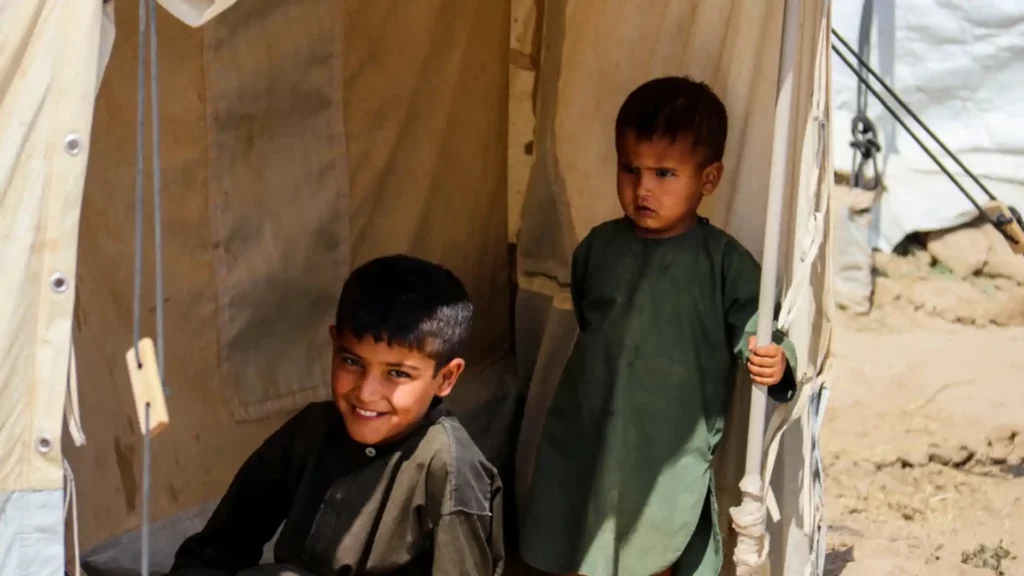Pakistan’s economy continues to face challenges due to high inflation and low foreign reserves
Nearly 10 million people in Pakistan are on the brink of slipping into poverty according to the biannual reports released by The World Bank. Pakistan has been undergoing a severe economic and political crisis for the past few years. The World Bank’s report further sheds light on the sluggish economic growth rate of 1.8%. This is intertwined with sky-high inflation which is at a rate of 26% in the current financial year.
The biannual Pakistan Development Outlook by the Washington-based lender indicated that the country would miss all the macroeconomic goals including the primary budget target and remain in deficit for three sequential years. This is contrary to the International Monetary Fund’s requirements demanding a surplus.
The poverty alleviation efforts are insufficient even though the economic recovery is promising in a much broader sense, says Sayed Murtaza Muzaffari, lead author of the report. The economic growth is expected to decline by 1.8% while maintaining the poverty rate around 40%. This is happening during a time when nearly 98 million people in Pakistan are in the clutches of poverty.
“Unless a major structural reform program is durably implemented, growth is expected to remain muted amid continued very low investment, persistent external imbalances, distortionary fiscal policies, and a large state presence in the economy,” the World Bank said.
The report also talks about the people who live just above the poverty line. The World Bank report suggests that around 10 million people are on the brink of stumbling into poverty. Some of the vulnerable and poor people might have benefitted from the gains in agricultural output, but these gains were again made redundant by the increasing inflation. This is again coupled with limited wage growth, mainly in sectors where daily wage workers are employed.
The wages of daily workers have increased only 5% during the first quarter of the financial year when the inflation rates have already touched more than 30%. Pakistan is currently seeking a new loan from the International Monetary Fund (IMF) to support the economy and improve the nation’s foreign exchange reserves. The country currently remains highly dependent on the IMF’s aid of $24 billion.
The continuing cost of living crisis with the increasing costs of essential services will lead to an increase in the number of children who cannot afford schools anymore and delayed or even poor medical treatments, the World Bank warned.
The country’s economy continues to face challenges due to high inflation and low foreign reserves, even though with reasonable signs of recovery. The World Bank stated that because of strict monetary and fiscal policies as well as import restrictions, policy uncertainty is still high, and economic activity is low.
According to the Washington-based lender, growth is expected to stay below potential in the medium term, with increased social vulnerability and limited progress in reducing poverty. It went on, “There are substantial risks to the outlook from the financial sector, unclear policy, and stronger external headwinds.”
Pakistan’s current account deficit (CAD) decreased to $0.8 billion in the first half of the current fiscal year from $3.6 billion in the previous fiscal year due to lower global commodity prices, import restrictions, and decreased domestic demand, according to the study.
In the first half of the current fiscal year, official remittances decreased 6.8% year over year because of currency rate rigidities earlier in the year. “FY24 is expected to see elevated inflation of 26% due to higher domestic energy prices, with little relief for low-income and vulnerable households that have exhausted their savings and have lower real incomes,” the report stated.
The increased interest payments will cause the fiscal deficit to increase to 8% of GDP. But, as fiscal consolidation takes root and interest payments decrease over time, the deficit will gradually decrease. The World Bank stated that although the official aim is 3.5% growth, Pakistan’s GDP is projected to increase by only 1.8% in the current fiscal year ending June 2024.
